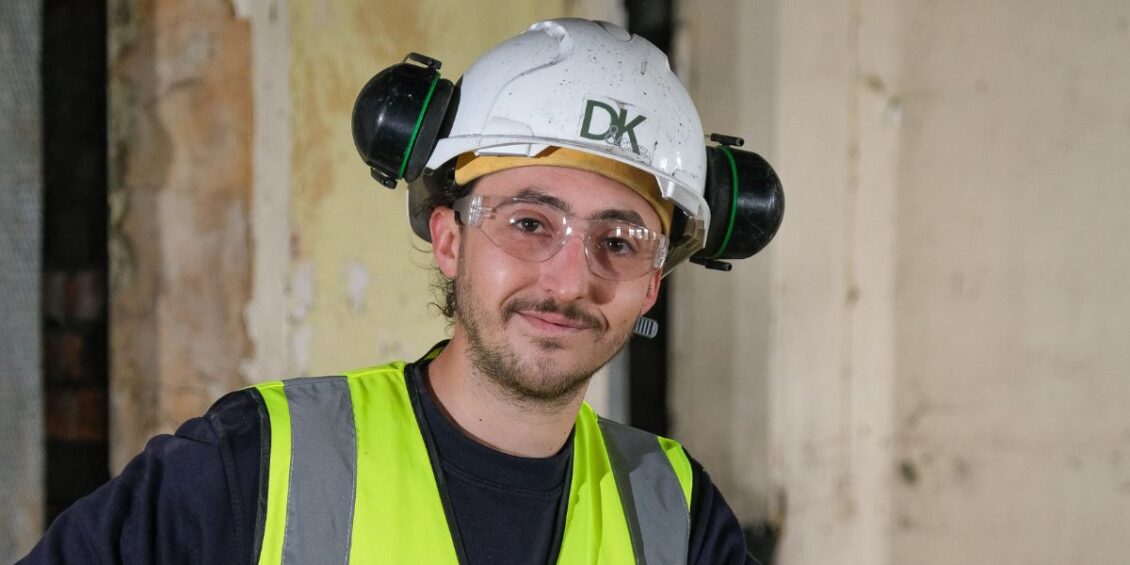Vehicle damage assessor

Reference Number: ST0406
Details of standard
Occupation summary
A Vehicle Damage Assessor (VDA) works within the Automotive Bodyshop Industry. This industry employs around 200,000 people in a range of large, medium sized and small businesses.
The broad purpose of the occupation is to methodically and accurately inspect and assess all elements of a motor vehicle that has sustained damage and requires repair. They will be able to identify and record damage on a vehicle and determine (using prescribed information from Manufacturers) which parts of the vehicle should be repaired or replaced. A VDA will have an understanding of the manual process of assessing and costing repair of a vehicle, whilst also being able to use the relevant electronic estimating software. They will have knowledge of all types of vehicles including petrol, diesel, electric and hybrid. A VDA will stay abreast of ever changing autonomous technological vehicle safety developments known as Advanced Driver Assistance Systems (ADAS). The VDA will produce accurate & detailed repair specifications to be used to carry out the required repair process. They will have commercial knowledge of their respective workplace and know how to apply this in order to determine a monetary cost and timescale for each repair job.
In their daily work, an employee in this occupation interacts with the customer of the damaged vehicle, the Bodyshop manager, vehicle repair technicians and office/administrative staff at their company and insurance companies. The assessor will work alone (once qualified) to assess the vehicle but will also liaise with the customer, insurance company and vehicle technicians to discuss the assessment, damage to the vehicle and how it will be repaired. The assessor may report to the Bodyshop manager, or sometimes the commercial director or other members of staff, depending on the staffing structure within their own organisation.
An employee in this occupation will be responsible for producing an accurate estimate to carry out a repair job which is subsequently agreed by key stakeholders.
A VDA will have excellent communication skills, be able to negotiate and have a methodical approach to work. Being able to carry out work accurately is essential.
Occupational duties
| Duty | Criteria for measuring performance | KSBs |
| D1 Appraise a damaged vehicle and identify and record damage, including impact zone and severity |
|
K1, K2, K3, K4, K5, K6, K7, K8, K9, K10, K11, K12, K13, K14, K15, K16, K17 S1, S2 B1, B2, B3, B4, B5, B6, B7 |
| D2 Identify non-accidental damage to vehicles |
|
K15 S1 B1, B2, B3, B4, B5, B6, B7 |
| D3 Make use of manual and digital image technology to record areas of damage identified |
|
K7 S2, S3 B1, B2, B3, B4, B5, B6, B7 |
| D4 Accurately record data from the vehicle including the correct vehicle identification and model details, mileage and modifications |
|
K7 S2, S4 B1, B2, B3, B4, B5, B6, B7 |
| D5 Identify and evaluate condition of safety related systems and any action required, applying H&S car related current legislation to do so (e.g. air bags, tyres etc) |
|
K6, K8 S5, S6 B1, B2, B3, B4, B5, B6, B7 |
| D6 Access industry vehicle repair methods and apply them appropriately |
|
K12, K13, K14, K17 S7 B1, B2, B3, B4, B5, B6, B7 |
| D7 Differentiate between items that need repairing and items that need replacement |
|
K1, K2, K3, K4, K5, K6, K7, K8, K9, K10, K11, K12, K13, K14, K15, K16, K17 S8 B1, B2, B3, B4, B5, B6, B7 |
| D8 Apply accurate and appropriate opinion times for method and duration for repair |
|
K12, K13, K14, K16, K17 S9 B1, B2, B3, B4, B5, B6, B7 |
| D9 Assess the cost and duration of a repair |
|
K1, K2, K3, K4, K5, K6, K7, K8, K9, K10, K11, K12, K13, K14, K15, K16, K17 S9, S10 B1, B2, B3, B4, B5, B6, B7 |
| D10 Discuss damage and repairs with a range of stakeholders (vehicle owners, insurance companies, colleagues and managers), listening to their view, responding to concerns and negotiating using evidence based reasoning |
|
K1, K2, K3, K4, K5, K6, K7, K8, K9, K10, K11, K12, K13, K14, K15, K16, K17 S11 B1, B2, B3, B4, B5, B6, B7 |
| D11 Assess the current market value of vehicle using industry proprietary guides |
|
K1, K2, K3, K4, K5, K6, K7, K8, K9, K10, K11, K12, K13, K14, K15, K16, K17 S12 B1, B2, B3, B4, B5, B6, B7 |
| D12 Obtain authorisation from the Client/Customer to proceed with repair to a vehicle and confirm the cost of the repair (if appropriate for the workplace) |
|
K11, K13 S9, S10, S11 B1, B2, B3, B4, B5, B6, B7 |
| D13 Interpret and accurately apply estimating software system |
|
K13, K16 S14 B1, B2, B3, B4, B5, B6, B7 |
KSBs
Knowledge
- Vehicles construction and materials
- Steering, suspension and braking, systems and operations
- Transmission and drivelines
- The principles of electrical systems
- Electrical/electronic components
- Vehicle safety systems
- Tools and equipment used in the process
- Understand current Health & Safety legislation in the workplace
- The structure of their organisation or workplace
- The importance of teamwork in the workplace
- How to communicate effectively
- Up to date vehicle repair technologies including Paint, Panel and MET
- Good understanding of commercial aspects of a body shop
- How to produce a job card
- Non-accidental related damage
- Electronic costings systems
- Industry vehicle Repair methods
Skills
- Recognise properties of different types of vehicle damage
- Maintain records
- Use manual and digital image technology
- Locate vehicle unique identification details
- Diagnose safety faults on vehicles
- Read, adhere to and apply relevant legislation
- Use repair methods
- Make judgements on vehicle damage, taking into account safety and cost
- Commercial decision making
- Prepare costings based on parts and labour ratios
- Oral communication, listening and negotiation skills
- Use industry guidelines appropriately
- Recognises importance of gaining approval before work commences
- Use of estimating software, spreadsheets, on-line databases
Behaviours
- Customer focussed – demonstrate behaviour that puts the customer first
- A right first time approach committed to delivering and maintaining high quality workplace standards
- A calm and reasoned approach
- A professional approach, demonstrates integrity and confidence in daily activities
- Adherence to company values, shows passion and enthusiasm for the industry
- Take responsibility for health and safety
- Attention to detail
Qualifications
English and Maths qualifications
Apprentices without level 2 English and maths will need to achieve this level prior to taking the End-Point Assessment. For those with an education, health and care plan or a legacy statement, the apprenticeship’s English and maths minimum requirement is Entry Level 3. A British Sign Language (BSL) qualification is an alternative to the English qualification for those whose primary language is BSL.
Additional details
Occupational Level: 4
Duration (months): 36
Review
This standard will be reviewed after three years.
Crown copyright © 2019. You may re-use this information (not including logos) free of charge in any format or medium, under the terms of the Open Government Licence. Visit www.nationalarchives.gov.uk/doc/open-government-licence












Responses